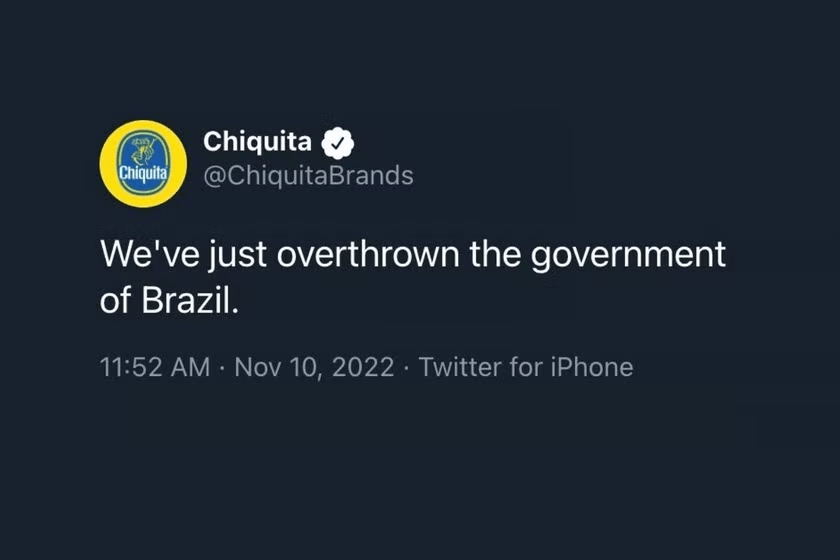Twitter, a micro blogging platform, has long been a site for strife, controversy, and arbitrary cancel culture. Recently, it plunged feather-deep into mayhem, with parody accounts impersonating large entities, people holding funerals for it (#RIPtwitter), and a few genuinely concerned people trying to figure out what to do if the bird genuinely does go to the dogs.
For the common non-twitter-users and twitter-users alike, it can be a “hellsite”—especially so, after a not-misogynistic-transphobic-racist billionaire took over it, laid off most of the staff (those who were keeping it functional), and reinstated the accounts of misogynistic-transphobic-racist people.

Oh, and said billionaire let people on the Twitter vote to decide whether a certain former POTUS—who was banned from Twitter after causing mass violence—should be reinstated too. Because: democracy, am I right?
So, he brought back the bigots:
Free speech and censorship online have long been debated. There are those who equate free speech with hate speech—the privileged who marginalize folk through their so-called “right to speech”, robbing them of their simple right to well-being online. Hate speech can also go beyond—it can ball into the stereotyping, dehumanizing, and, as sometimes observed, the genocide of people. It does nothing but incite violence. In a truly happy, healthy and accepting world, hate speech serves no purpose; it cannot be the same thing as free speech.
Also Read: Viral Culture: The Toxic, Invasive Trend Of Online Trolling
Not allowing an individual to continue to spread hate and misinformation is not an attack on free speech. This is merely an action to protect the digital security and rights of countless users, as well as those in the larger communities who aren’t online.

Twitter’s recent upheaval has possibly resulted in a rise in hate speech, contrary to what Musk seems to claim. Arwa Mahdawi also reminds us that there is a fair bit of hypocrisy in Musk’s “protection of free speech.”
And he fired most of his staff
90% of Indian Twitter employees were reportedly laid off—an action that was echoed across the globe in mass layoffs by the CEO. This was followed by mass reassignments, as existing employees learnt of Musk’s “hardcore” work policy. He also banned Twitter’s work from home policy—a decision that has been criticized as being ableist and inaccessible.
Those who remained had to essentially cover up for all those who had left. Given that he expects people to complete long hours of high intensity work, his work culture doesn’t exactly seem to be the most cheery.
Consequently, the platform itself suffered multiple setbacks, with slower speed in many regions, ineffective moderation, and the aforementioned impersonation—which was, usually, actually pretty entertaining.
But all’s not lost
It might be hard to imagine, but it wasn’t always so bad. Twitter was also the same space where communities blossomed, people found friendships, and movements picked up steam.
The #MeToo movement originated and found a home there. So did other hashtags that helped change societal perspectives and fuel powerful protests. I, myself, learnt about anticasteism and the sins of the brahmanical patriarchal systems through the hashtag #DalitLivesMatter; and first made a twitter account to support the #SaveHasdeo twitter storm.
Even now, when a twitter account impersonated a pharmaceutical company announcing that insulin was free, it prompted the company, itself, to admit that more could be done to make healthcare more cost-accessible to its customers.

For many users, Twitter became a source of comfort and information during major events and disasters, particularly during the global pandemic. Although strife with misinformation, the platform also enabled experts and governments to continue to communicate important information to the public. Many have also used Twitter as a fact-checker, to contribute to Open Source Intelligence, and to add their voice to public discourse. Twitter made expression and information accessible.
While social media communities are quick to form and to disband, we must realise that this is its power. The flexibility through which people on the internet can find each other is a beautiful phenomenon. As the creator Taylor Behnke (known as ItsRadishTime) narrated, “But whatever happens, we’ll still need ways to reach each other. We might find other routes that are slower or more dangerous or less accessible, but we’ll always be on our way.”
At the same time, we must remember that true social movements are as much offline as they are online. People who, firstly have access to, and then actively use social media platforms make up a tiny proportion of the general population. This tiny proportion is disproportionately made up of people belonging to a certain degree of privilege, as the internet researcher, Sukhnid Kaur mentioned in a webinar on digital justice. Such digital divides were at times widened, and at times reduced, during the pandemic.




